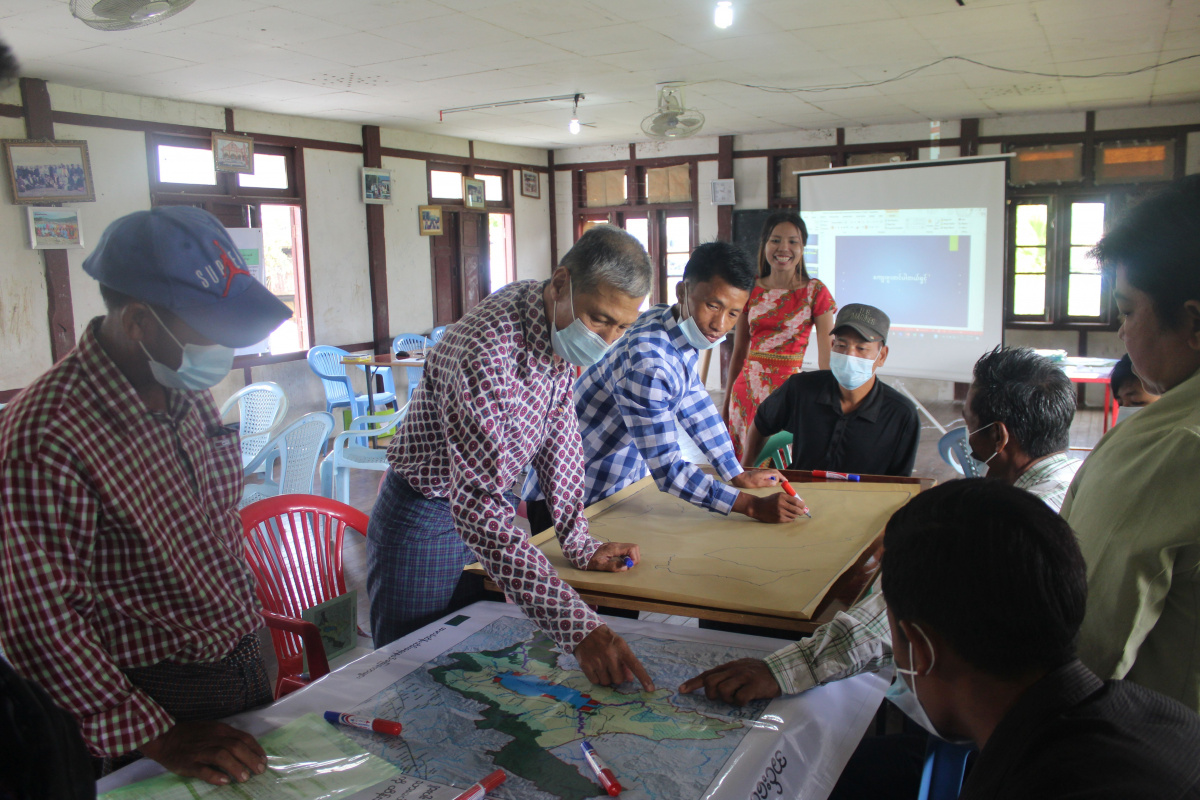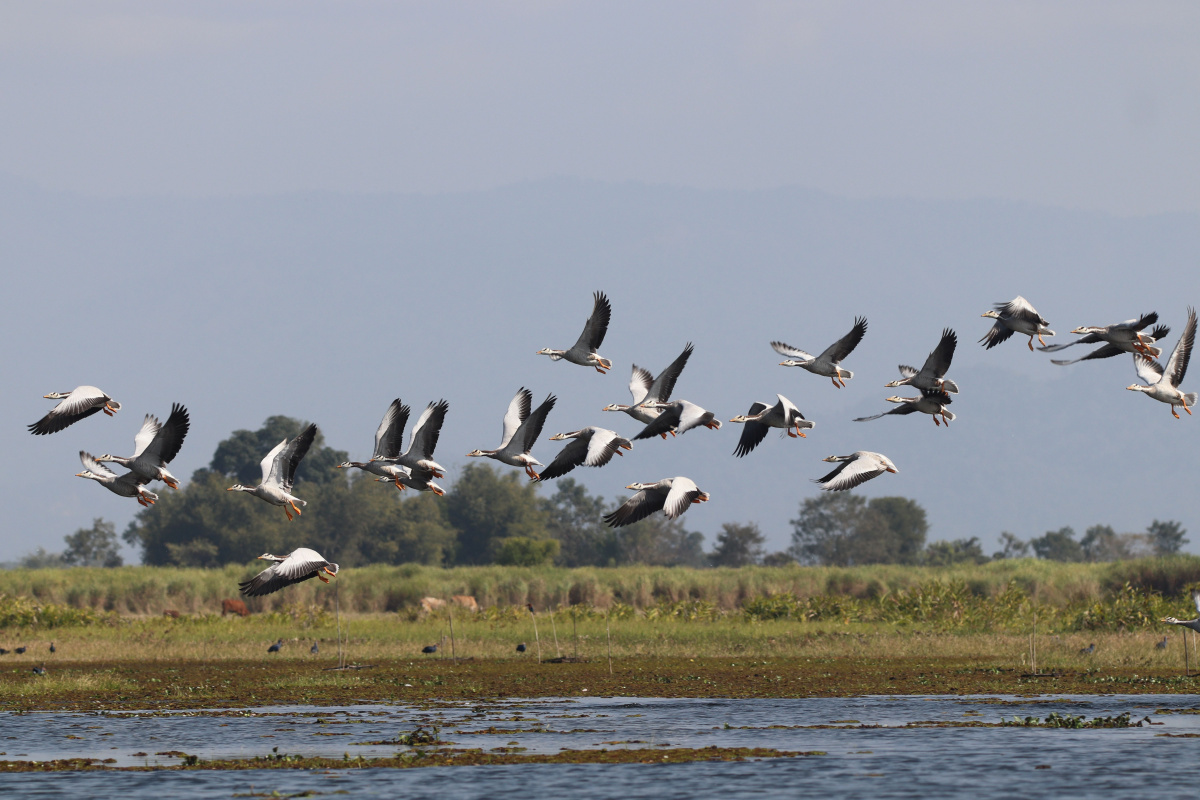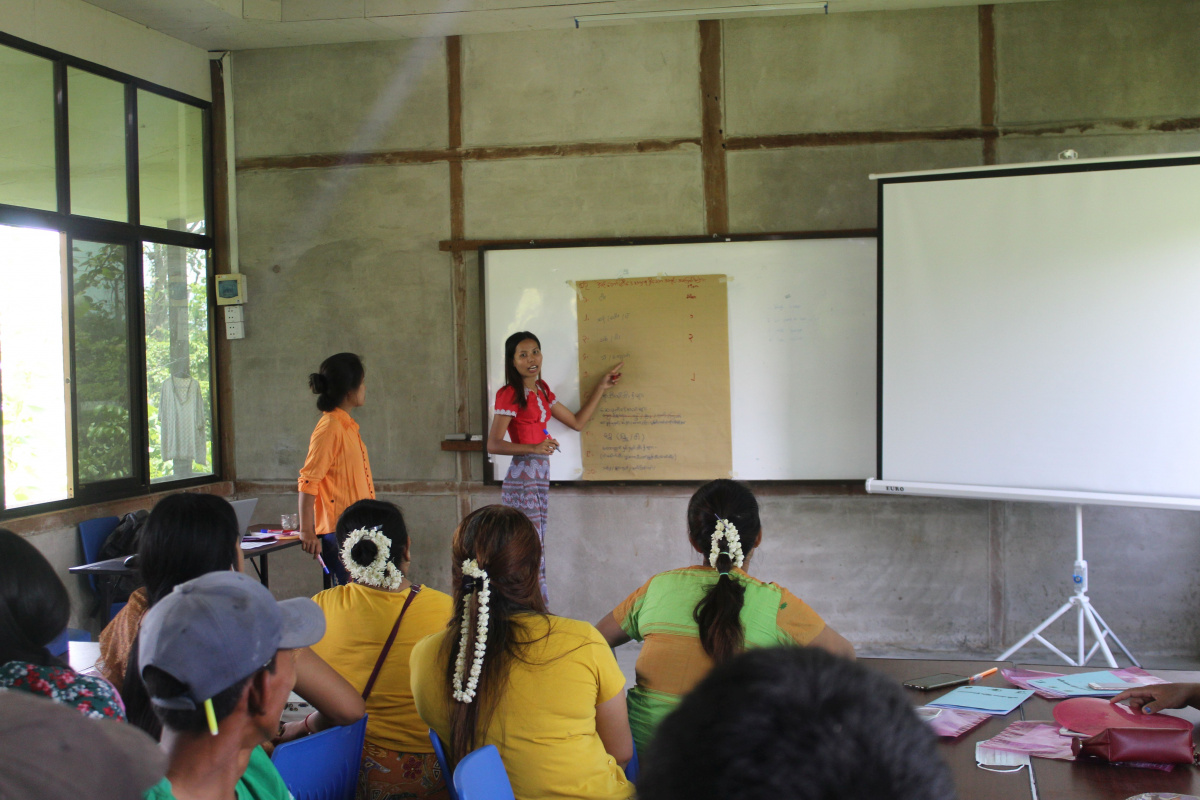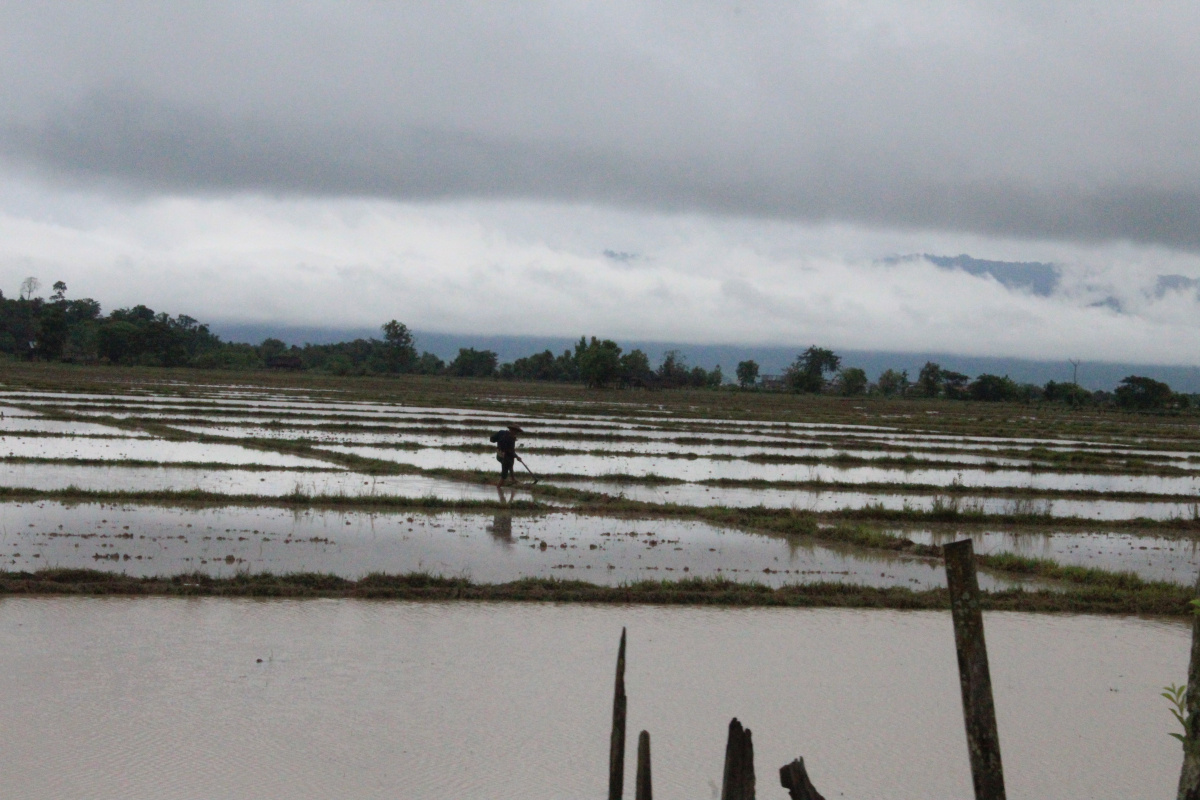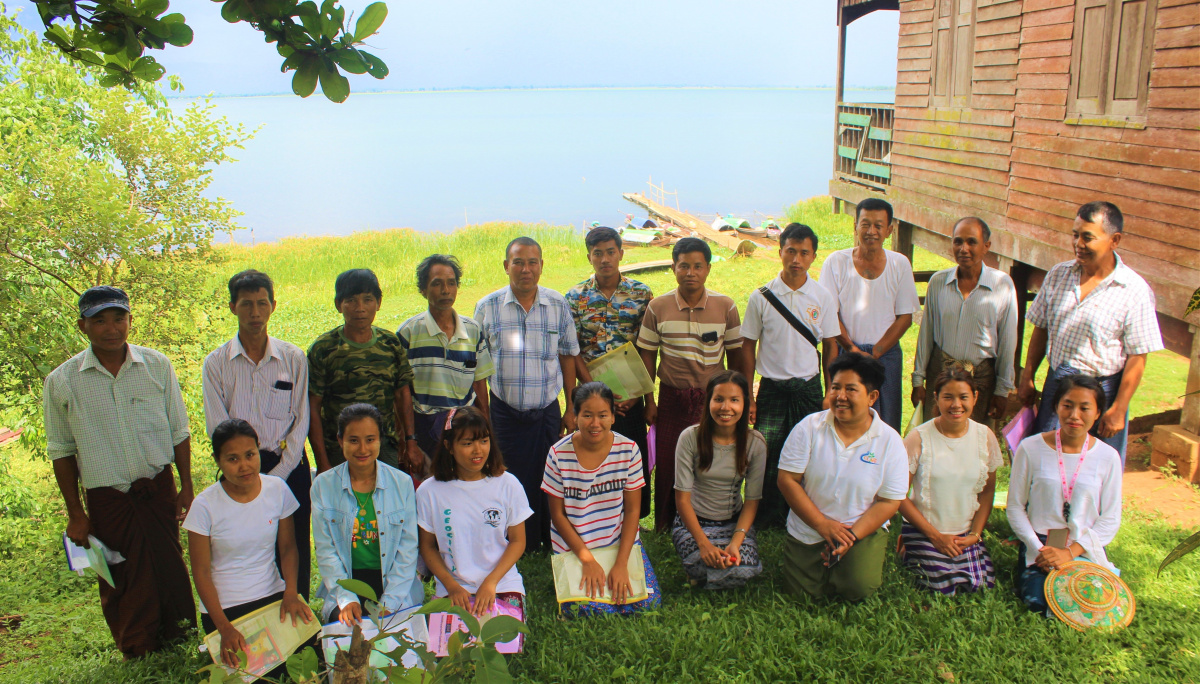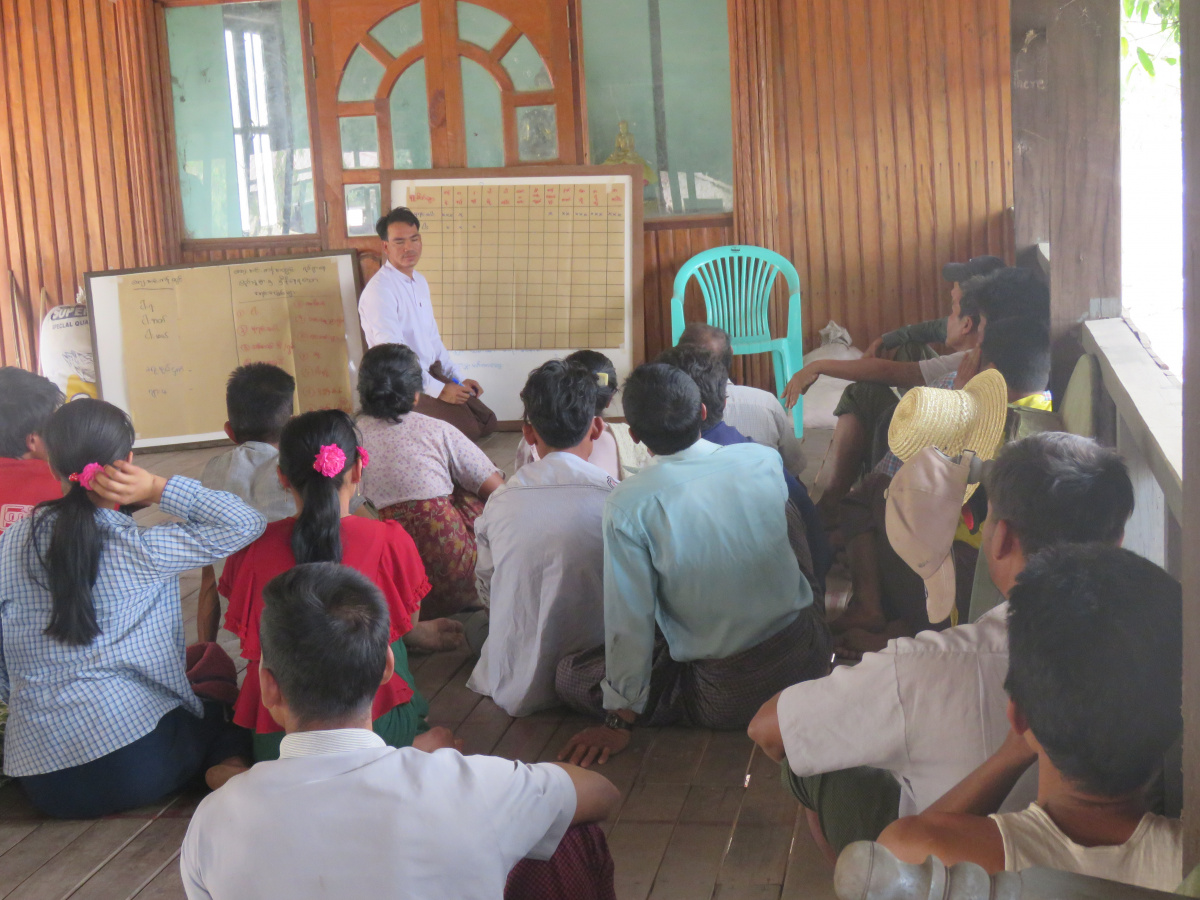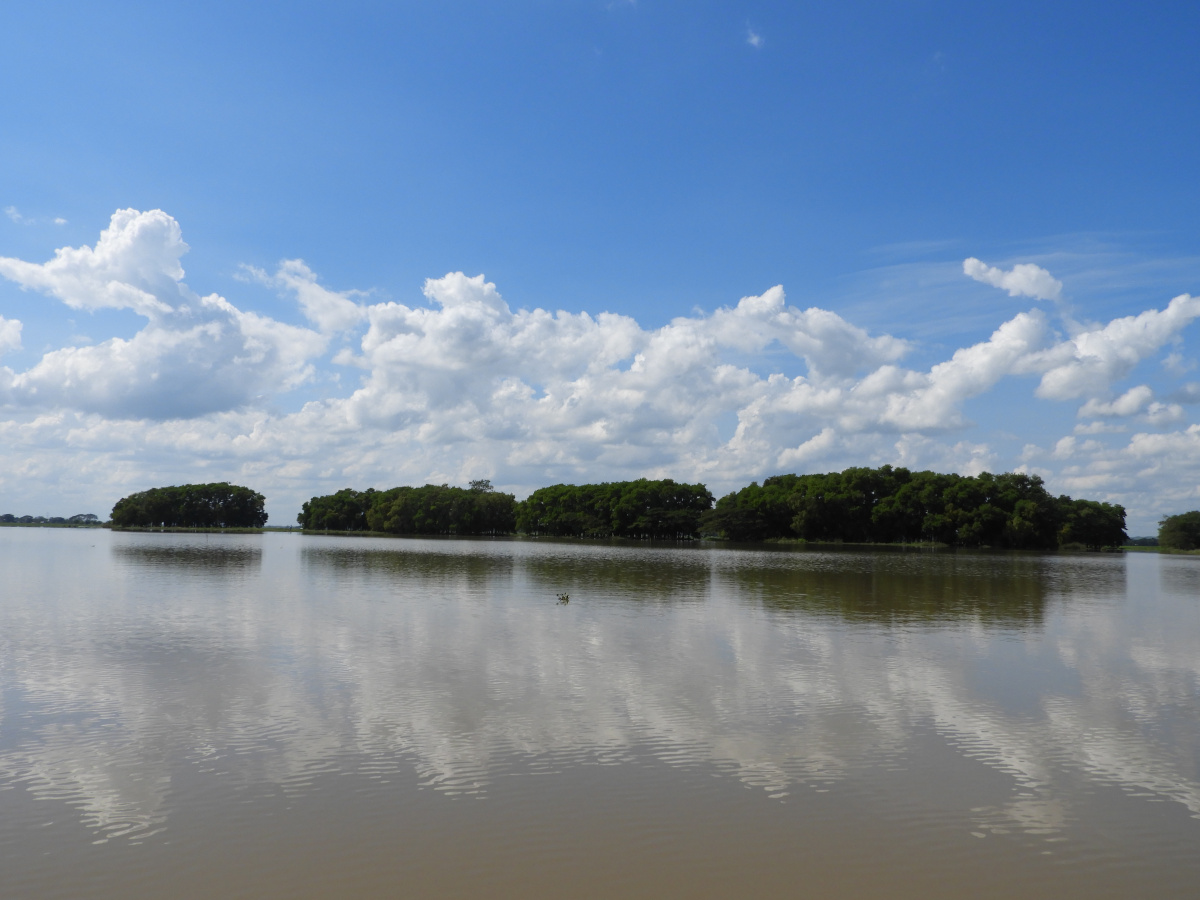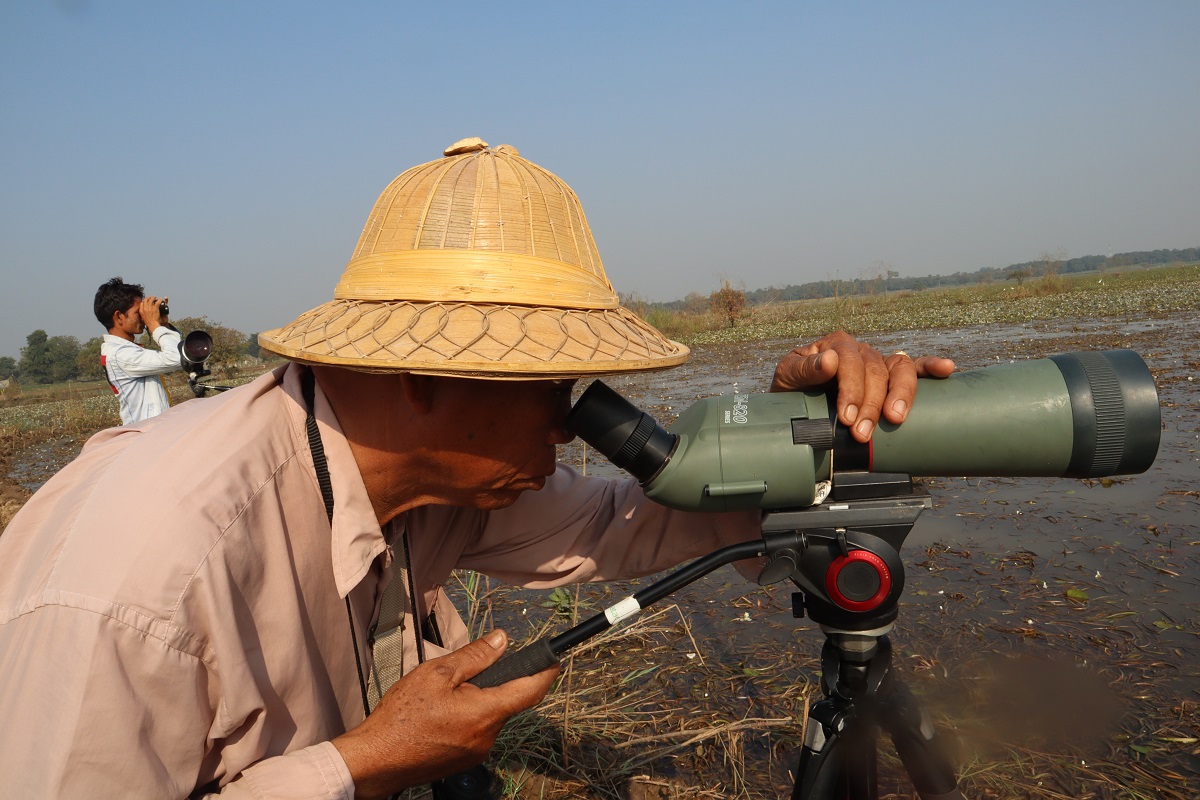Climate change threatens farmers’ livelihoods in Indawgyi Biosphere Reserve, Myanmar
A Climate Change Vulnerability Assessment, led by Fauna & Flora International has found that Indawgyi Biosphere Reserve in Myanmar is facing increased risks from climate change impacts. Threats include intense rain causing flooding in paddy fields during the rainy season. This is coupled with drought and extremely high temperatures during the summer, damaging agriculture and reducing soil quality. The results of the assessment will be used to develop Ecosystem-based Adaptation measures that will be integrated into the management plan for the site.
In early May, the project conducted the assessment with a team of fifteen national and international experts leading the habitat, species, and livelihood assessments. The team assessed potential species, ecosystems, and livelihoods, which will be affected by climate change impacts. Researchers also studied villages near habitats experiencing non-climate stressors such as land-use change, habitat fragmentation, and water pollution.
The expert team assessed six different habitats: grasslands, rivers and streams, open lakes, lake margins, agricultural lands, and watershed forests; and twenty species: eight species of mammals, seven species of birds, and five species of fishes.
Initial assessment results showed that three habitats; grasslands, rivers and streams, and agricultural land were heavily impacted by the increasing intensity and frequency of floods and droughts. Consequently, species inhabiting the grasslands and agricultural lands, such as the hog deer and Sarus crane, are facing habitat loss.
The Village VA was completed in ten villages using participatory rural appraisal tools to collect village socio-economic and spatial information to understand climate change impacts. The team recorded various extreme climate events such as drought, heavy rain, and flooding of agricultural land, and the resulting impacts on the livelihoods of local farmers. To cope, some farmers have shifted to cultivating beans and groundnuts instead of rice. The planting schedules of most local crops have also been adjusted to adapt to the changing weather patterns.
The results of the assessment will be shared through the UNESCO Biosphere Reserve network via the Indawgyi Wetland Education Centre. The results will also be presented during a stakeholder workshop to develop adaptation plans for Indawgyi Biosphere Reserve. The workshops aim to increase the awareness of local stakeholders on climate change impacts on natural resources as well as to highlight the benefits of Ecosystem-based Adaptation.
The Mekong WET Small Grants fund several wetlands projects in the Indo-Burma region. These initiatives are directly answering specific climate threats to wetland ecosystems, species, and communities using Ecosystem-based Adaptation strategies as the main approach.
About MWET
Funded by the International Climate Initiative (IKI) of the German Federal Ministry for the Environment, Nature Conservation, Building and Nuclear Safety (BMUB), the “Mekong WET: Building Resilience of Wetlands in the Lower Mekong Region” project aims to build climate resilience by harnessing the benefits of wetlands in Cambodia, Lao PDR, Thailand, and Viet Nam.
Mekong WET will help the four countries to address their commitments to the Ramsar Convention, an international treaty for the conservation and sustainable use of wetlands, and to achieve the Aichi Biodiversity Targets.
About IBRRI
The Indo-Burma Ramsar Regional Initiative (IBRRI) was jointly developed by the Ramsar National Focal Points of the five countries (Cambodia, Lao PDR, Myanmar, Thailand, and Viet Nam), and IUCN’s Asia Regional Office, based on specific needs identified in these countries. It was endorsed by the 52nd meeting of the Ramsar Convention Standing Committee in June 2016. The IBRRI aims to support the coordinated implementation of the objectives of the Strategic Plan of the Ramsar Convention. IUCN acts as the Secretariat for the Initiative under the leadership of the Steering Committee, which includes representatives from the five governments and the Ramsar Convention Secretariat as an observer.
